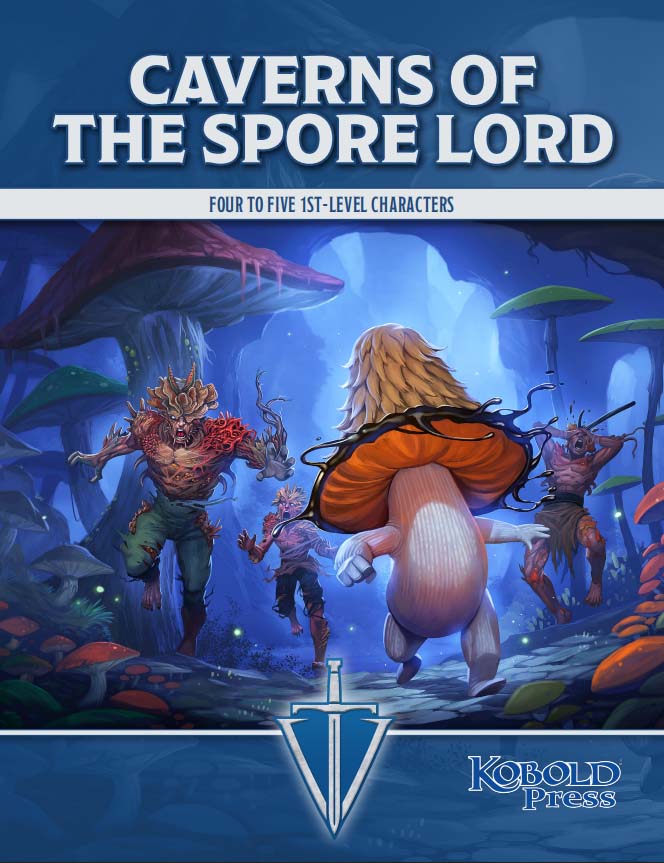
There gets to be a point where traps are expected. It’s inevitable for meta-gaming to creep in, even unintentionally, particularly among friends where players tend to know your GMing style. Now you can roll with that and let them get away with a few easy ones, or you can be even more devious. In your game world, the designer of a deadly trap likely intends to kill someone by surprise. This inherently means they don’t play fair. So you have to ask yourself, why do some traps have helpful riddles, puzzles, or hidden switches that allow the characters to get out of the very expensive death trap they spent so much time installing in their dungeon? Assuming the creator of your dungeon isn’t actually testing the characters in some way, really wanting the best adventurers to win, why not instead play on those tropes and offer a few hidden distractions?
Below are three traps that include apparent solutions or bypasses to the trap that exist only to eat up adventurers’ valuable time and resources while hopefully keeping them in danger without their realizing it.
Good Timing
Complex trap (level 5–10, moderate threat)
Passing through a doorway, the room explodes in fire and continues to do so every round!
Trigger. Magical wards are worked into the door frame, facing the room and thus out of sight from the hallway. When a living creature passes through the door, a blast of fire fills the room.
Initiative. The trap acts on initiative count 20.
Active Element (Initiative 20). A blast of fire fills the room doing 11 (2d10) fire damage. A successful DC 15 Dexterity saving throw halves the damage.
Dynamic Element. If the pressure plate (see Distraction) is “disabled,” the fire blasts become randomized. Every round roll 1d20 and consult the table below.
| 1d20 | Effect |
| 1–5 | The trap does not go off this round. |
| 6–10 | The trap goes off on initiative 10 instead of 20. |
| 11–15 | The trap functions normally. |
| 16–20 | The trap goes off on initiative 10 and 20. |
Constant Element. The room traps heat and quickly burns away breathable air. At the beginning of their turn, a creature in the room must succeed on a DC 10 Constitution saving throw or take 3 (1d6) fire damage and have their speed reduced by 10 feet.
Distraction. A pressure plate can be detected 15 feet into the room with a successful DC 10 Wisdom (Perception) check. It is in full view from the hallway. It can be hopped over with a successful DC 10 Strength (Athletics) check. If the plate is disabled with a DC 10 Dexterity (thieves’ tools) check, it activates the dynamic element.
Countermeasures. The runes can be located with a successful DC 15 Wisdom (Perception) check if they are in line of sight or a detect magic spell. They can be disabled with a successful DC 15 Dexterity (thieves’ tools) check, a DC 10 Intelligence (Arcana) check, or a dispel magic against a 3rd-level spell.
In Over Your Head
Simple trap (level 1–4, deadly threat)
The mosaic-covered walls of this room have several decorative carvings. After entering the room, the door shuts, holes open in the ceiling, and the room rapidly begins to fill with water.
Trigger. On the round after a living creature enters the room and is detected by an alarm spell, the vault-like door slams shut and seals.
Effect. The water fills the room completely in 6 rounds.
Countermeasures. A detect magic spell notes abjuration and illusion magic in the room. The door’s workings can be opened by prying the metal plate off of the back with a successful DC 15 Strength check or by doing 10 points of damage. Once the workings are exposed, the steel rods locking the door in place can be moved with a successful DC 20 Strength check or with a DC 15 Dexterity (tinker’s or thieves’ tools) check. After 3 rounds, the door is underwater and anyone working on it will have to hold their breath.
Distraction. As the door slams shut, writing magically appears on the wall in the form of a riddle. Each time a riddle is correctly answered by pressing the correct glass carving, another riddle appears until all four have been answered. The correct carving can be located with a successful DC 15 Intelligence (Investigation) check. Answering a riddle causes one of the four openings in the ceiling to shut and another below the water level to open. This can be noticed with a successful DC 20 Wisdom (Perception) check when it becomes clear that the rate the water is rising isn’t changing.
- What does a stone become when in the water? Answer: whetstone (represented by crystal-shaped carving)
- I can be found in water but never wet. What am I? Answer: reflection (a mirror)
- I’m the son of water but when I return to water I die. Who am I? Answer: ice (a snowflake)
- Which letter of the alphabet contains the most water? Answer: C (a crescent)
Switch It Up
Simple trap (level 1–4, dangerous threat)
Several beams of sunlight randomly cross a 40-foot hallway whose walls are studded with holes. Crossing the hallway results in arrows firing out of random holes.
Trigger. Every time 25 pounds or more is placed on the pressure sensitive floor, two arrows fire.
Effect. The two arrows fire with a +8 attack bonus and deal 5 (1d10) piercing damage on a hit.
Distractions. The light beams are obvious and can be avoided with a DC 15 Dexterity (Acrobatics) check. Each beam of light shines on one of a dozen of the holes. Inside each is a small switch that can be located with a successful DC 10 Wisdom (Perception) check. Neither the light beams nor the switches are connected to anything; they do nothing. A successful DC 20 Intelligence (Investigation) check determines they do not appear to be connected to anything.
Countermeasures. A successful DC 15 Wisdom (Perception) check locates one of ten holes that has an arrow in it. The arrow can be disabled with a DC 15 Dexterity (thieves’ tools) check, or it can be simply jammed with a heavy object like a rock or piton. A successful DC 20 Wisdom (Perception) check notes that the floor subtly shifts when weight is placed on it, but it cannot be disabled without ripping up a 10-foot-square area of the floor by doing 30 points of damage to the stones.

